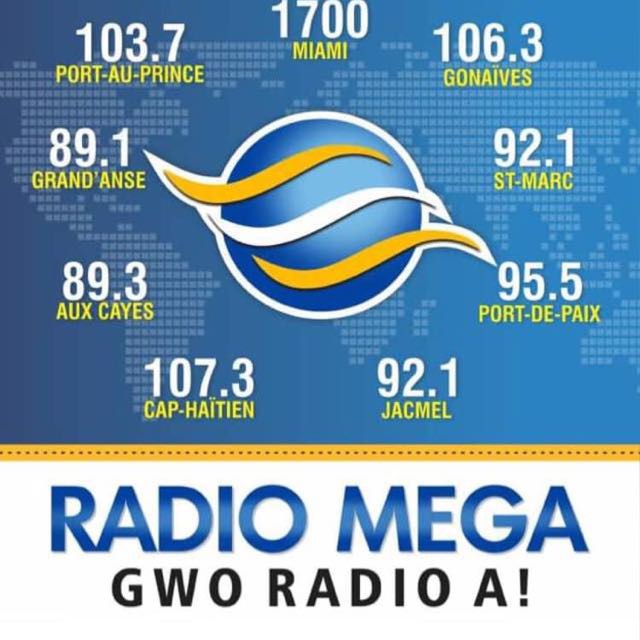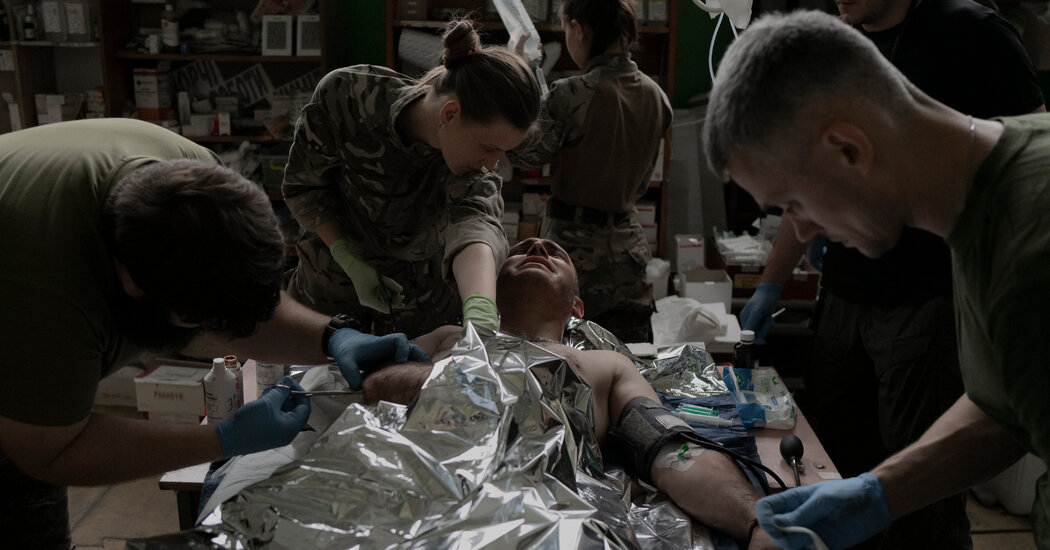A commotion sounded on the entrance of the constructing, and a shout went up. Troopers carried in two males on stretchers, one his lined face taut in a grimace, a 3rd, with bloodstained pants, following behind.
Inside seconds the lads had been lifted onto working tables and medics swarmed in, slicing off bloody garments, hooking up drips, speaking to the lads in low voices.
“Brother, you’ll make it,” the third soldier, Batya, known as out to his pal with a chest wound. “Maintain on, we have now extra to do.”
Wounded simply 40 minutes earlier on Ukraine’s southern entrance within the Zaporizhzhia area, the troopers from the a hundred and tenth Brigade had arrived at a stabilization level, one in all a dozen medical stations arrange by the Ukrainian Military inside a number of miles of the entrance line to make sure crucial, lifesaving care.
For the final two months, as Ukrainian troops have tried to interrupt by means of Russian defenses in a broad counteroffensive to grab again occupied terrain in southern Ukraine, their items have run into dense minefields and heavy Russian artillery hearth and drone assaults.
Every mile is a bloody struggle because the counteroffensive has progressed painfully slowly, with items developing in opposition to dug-in Russian defenses and taking heavy casualties. Troops spearheading the offensive have breached the primary line of protection in areas in latest days, probably opening the best way for a deeper assault.
Positioned near the entrance traces, the stabilization factors, momentary medical posts the place sufferers are stabilized for onward evacuation, have been receiving a relentless influx of troopers wounded within the combating. The numbers have been “colossal,” stated a medic from the middle the place the three males from the a hundred and tenth Brigade had been handled.
Geared up with 4 working tables in an extended room, the stabilization level handles the wounded from a number of brigades concerned within the counteroffensive and has been working across the clock for 2 months.
The Ukrainian navy allowed journalists from The New York Occasions to go to a number of stabilization factors alongside 100 miles of the southern entrance over the past week. For safety causes, they had been requested to not establish areas or buildings, and to call troopers solely by their name indicators.
As Ukraine ready new brigades for the counteroffensive, it additionally arrange an intensive medical evacuation system with 4 traces of care, encompassing 20 metropolis hospitals within the area, an array of stabilization factors and as much as 50 medical items connected to the brigades.
The person who devised the system, Dr. Roman Kuziv, the top of the navy hospital within the metropolis of Zaporizhzhia, flicked open a display on his cellphone to indicate a database of the case load throughout the entire Zaporizhzhia entrance. The sufferers are colour coded based on the severity of their wounds.
“I can see if they’re yellow, inexperienced or purple,” he stated. To date the system was operating at 20 % of its capability, he stated.
The intention is to make sure that every wounded soldier receives a excessive degree of care inside as little as 25 minutes of the damage with a purpose to save lives, he stated. It isn’t at all times doable. A fight medic on the entrance line shortly administers first support, however Russian artillery hearth is commonly so intense that typically items can not evacuate the wounded for hours, medics stated.
The ambulances that transport troopers to the stabilization factors continuously come underneath hearth as effectively, and troopers typically have to tug or carry the wounded for a number of miles on foot to a car. One stabilization level was hit in a missile strike one latest evening, medical doctors stated.
Regardless of the chaos of battle, the system holds collectively effectively.
Stabilization factors are set again a number of miles from the entrance line for security and for entry to a gradual water provide. There, medical doctors deal with the wounded for shock and to stop blood loss earlier than sending sufferers on to raised geared up stabilization factors the place surgeons can function or to metropolis hospitals, medical doctors stated.
On the subsequent medical stage, 40 minutes’ drive away on a potholed street, surgeons pinned damaged limbs and fought to save lots of a soldier’s foot from a mine damage. The bones had been smashed, however the blood vessels had been intact, stated Bohdan, the physician in command of the stabilization level. Because the surgeons operated, he moved to a close-by desk, urgent a pad on the bleeding wound of a soldier.
For operations close to the entrance line, artillery barrages landed not distant as medical personnel, drivers and guards labored evening and day. The workers stayed undercover more often than not to maintain out of sight of Russian reconnaissance drones. At evening, they labored at the hours of darkness for safety, largely utilizing a purple mild, which is much less detectable, on their headlamps.
The casualties arrived in spurts and on some days in a steady rush. There have been dozens of mine accidents and shrapnel wounds, however thus far on this counteroffensive, few bullet wounds, medical doctors stated.
A fight medic, pouring with sweat after carrying the wounded out from their positions, paced the room anxiously as medical doctors labored on the lads, earlier than heading again to the entrance line.
“Round 10 rockets from a grenade launcher landed close by,” the soldier, Batya, 51, stated, describing the assault on their place. Nonetheless reeling from a concussion, he stated he had grabbed a medical equipment and run out to assist the wounded. He got here throughout the primary wounded soldier, Vorchun (Grumpy), within the nearest bunker and bandaged his face and fingers, after which discovered his pal Shuravi, 57, who had been dragged right into a trench with a chest damage, he stated.
“He was most likely within the open when he was hit,” Batya stated, slumping in a chair, his head in his fingers.
The three males from the a hundred and tenth Brigade would survive, stated Romashka, a quiet, calm officer who heads the stabilization level. Romashka, whose name signal means Daisy, known as the subsequent medical submit: “I’m sending you six guys, two yellow, the remainder inexperienced.”
The subsequent day, the a hundred and tenth Brigade took half in an assault, taking heavy casualties. At evening, all 4 tables had been occupied by troopers with extreme leg accidents that would want amputation, stated a Swedish volunteer fight medic, who that his title not be revealed for safety causes. The subsequent morning, troopers carried out physique components in black luggage for disposal.
Some medical doctors stated they’d seen worse casualties in battles final 12 months; one stated they had been treating as much as 250 individuals a day again then within the counteroffensive in Kherson area. The Ukrainian authorities doesn’t launch casualty numbers for the Ukrainian navy, however Western officers have stated the variety of useless and wounded is effectively over 100,000.
Within the first months after the Russian invasion final 12 months, many troopers didn’t have physique armor or helmets and suffered usually deadly accidents to the top and chest, stated Dr. Andrii Komarinets, the top of medical companies for the a hundred and tenth Brigade, who runs one of many bigger stabilization factors.
Everybody had physique armor now, he stated, however the brand new menace is Russian mines. “They booby-trap their useless, they booby-trap our useless, they mine something they’ll,” he stated of the Russian forces. “Our males enter a bunker, they usually detonate it remotely. They’ve loads of explosives.”
His groups had been taking casualties too, he stated.
“We now have a driver, his son died three days in the past underneath shellfire” on the battlefield, he stated. “And final week one in all our fight medics died.” The medic, name signal Boroda, was driving a medical evacuation automobile, clearly marked to point that it was an ambulance, when it got here underneath direct hearth from a Russian tank, he stated.
The Russians had mined the wrecked car and had it of their sights, so his crew had not been capable of retrieve it, he stated.
The medics relied on donations, largely from the Ukrainian diaspora around the globe, for extra tools. “The ultrasound machine was purchased for us by Ukrainians dwelling in Australia. We now have an ambulance purchased by Individuals and delivered by means of the Ukrainian Church,” he stated. “We now have two mattresses from two guys within the Netherlands whom I’ve by no means seen.”
However the military was in need of medical doctors and particularly of nurses, he stated. “We don’t have sufficient fingers,” he stated.
The pressure on the medical operations was usually revealed in gestures reasonably than phrases. An administrator silently lifted a thick stack of medical reviews from the final week, one for every affected person. That they had handled greater than 70 folks that day, and extra had been on their manner, he stated.
Romashka smoked an elegantly curved pipe as he scrolled by means of messages on his cellphone whereas ready for the subsequent sufferers. In one other nook of the room, nurses minimize up a watermelon. “Have some, it’s very candy,” one stated.

